To my other GT6
pages.
November 13, 2020
Front Engine Plate & Camshaft
The triumph six cylinder engines have flat plates that close off
the front and rear of the block. The front plate also locates the
camshaft, and carries the timing gear cover with its front
crankshaft seal. The rear plate is heavier, at a little over
1/4" thick, while the front one is just under 3/16". My
plates were greasy, with remnants of gaskets and sealer, but not
really any rust.
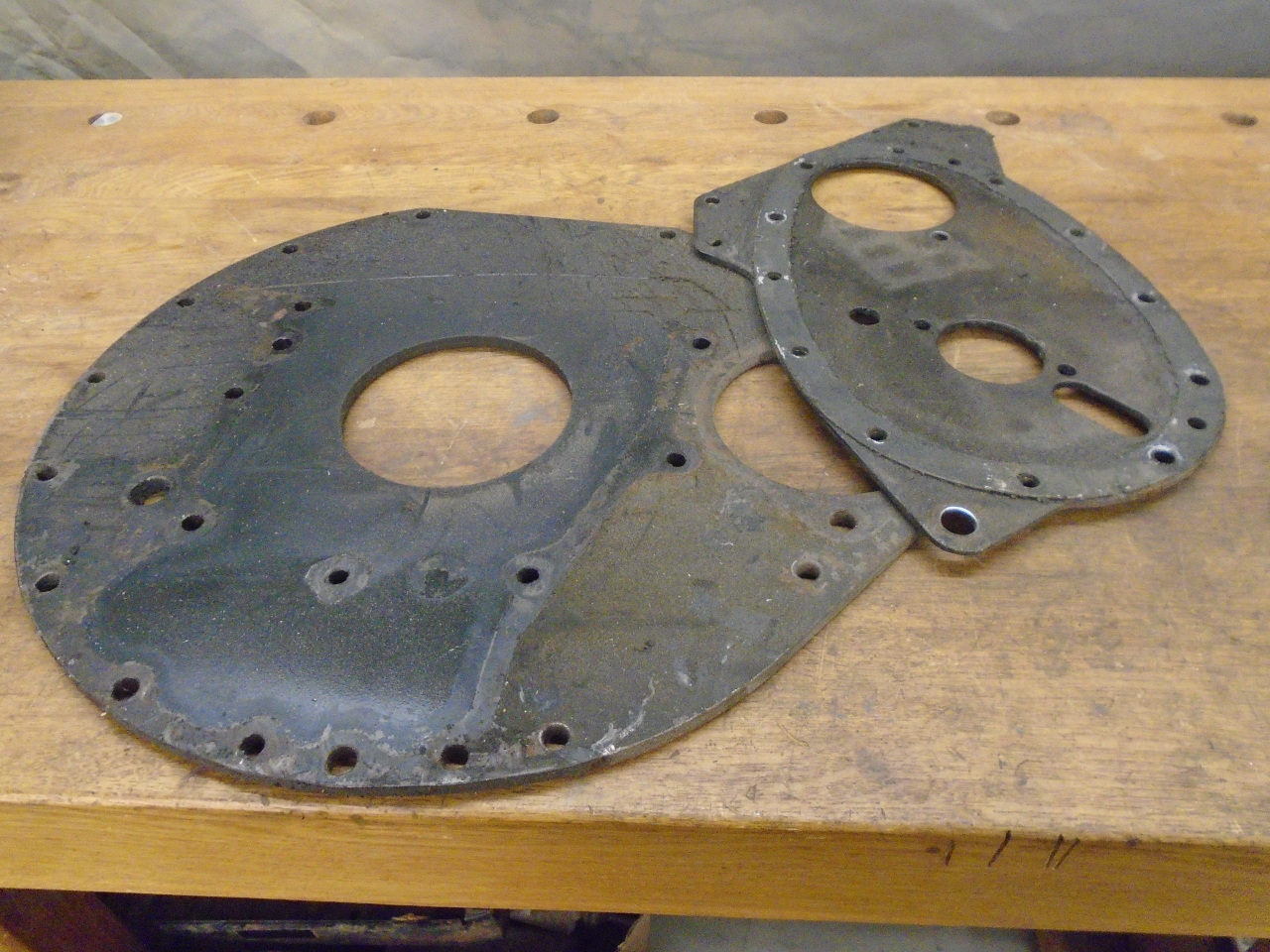
The front plate has what I consider a design flaw that I wanted to
fix. The plate extends out beyond the side of the block on
the left side of the engine, as does the timing cover. The
timing cover is attached only to the front plate in that area, by
the use of short 5/16-24 slotted head machine screws. The
thin plate can only offer less than four threads for the
fasteners. That makes these holes prone to stripping.
This is almost certainly why the designers specified the slotted
head screws for these locations--so it would be harder to
overtorque them. The factory torque specs for those slotted
screws is less than half that for the hex head screws that go into
the block, and is only to maintain 4 ft-lb after a "settling
period", whatever that means.
This suggests to me that not only are these threaded holes prone
to strip, the joint is prone to leak in this area.
My solution (though I'm guessing not an original idea) was to
enhance the threaded hole by welding nuts on the backside.
The nuts were welded on with a bolt installed, so that the new and
old threads would be not only concentric, but continuous. I
also marked the outline of the block and the timing cover on the
plate so I could mask for powder coating. The parts exposed
to the environment will be coated, but the inside, and the gasket
sealing surfaces will not.
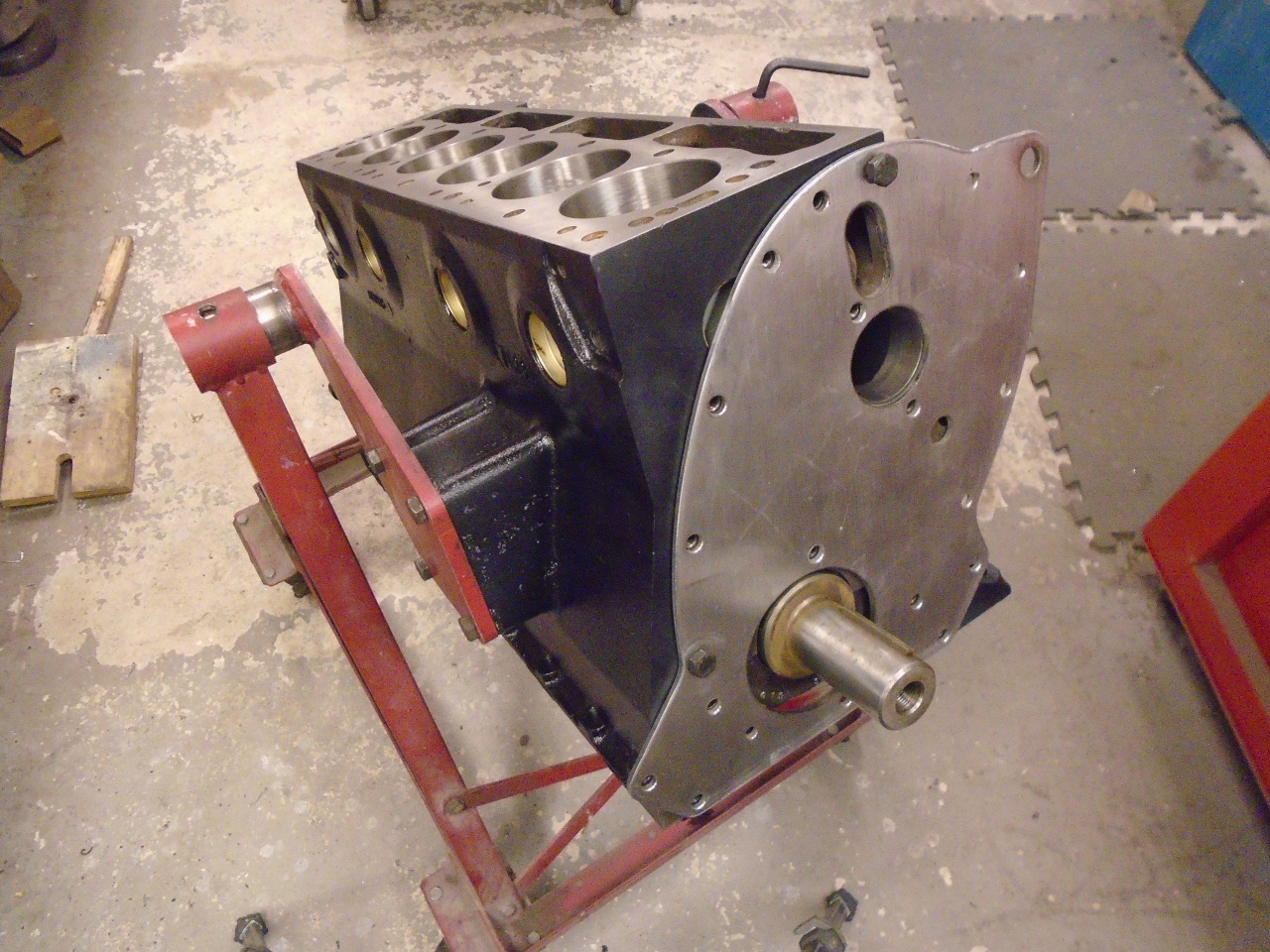


I realized after powder coating the plate, that there was one more
location with the short threads. Luckily, it wasn't in the
coated area.

While trial fitting the modified plate, I realized that the welded
nuts interfered with the alternator bracket. The bracket did
have a small recess to accommodate an original fastener protruding
slightly, but I had to enlarge it considerably. Also, I had
to carve a little gullet in one of he webs for the adjacent
fastener.
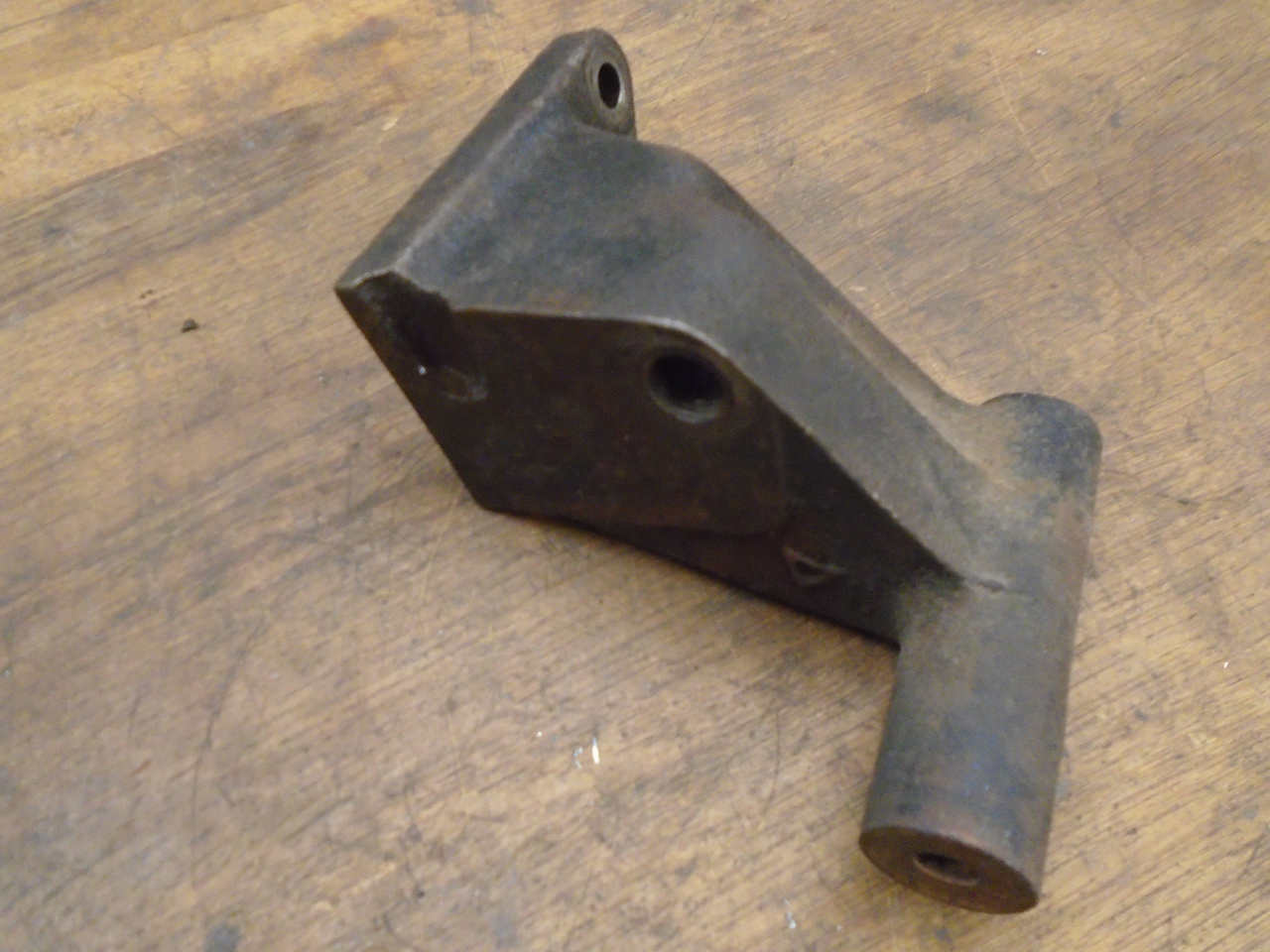


Then powder coated the bracket and refreshed the fasteners.

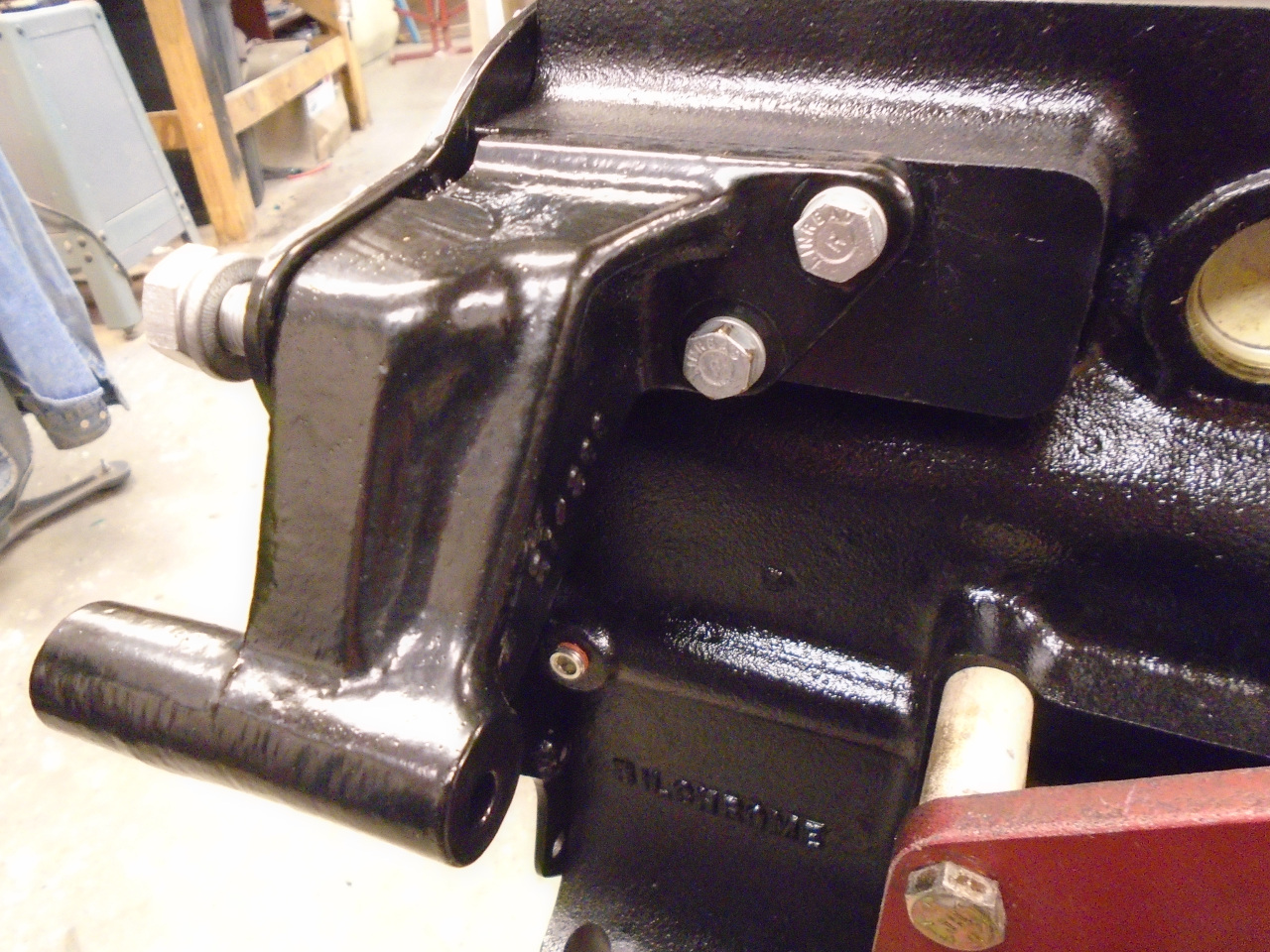
Another test fit showed everything OK. Note that the engine
is upside down in many of the following pics.
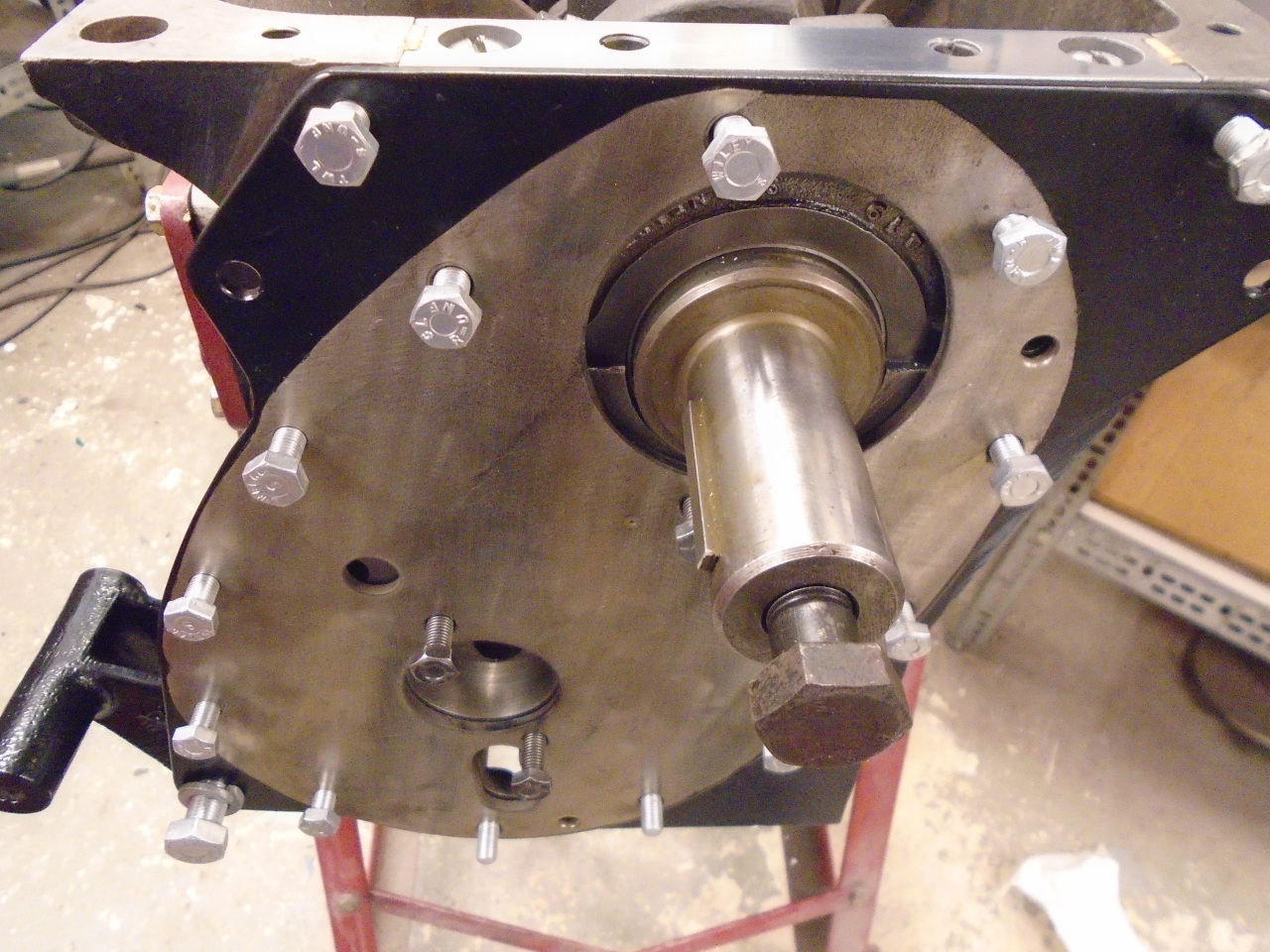
So, gathered together all the pieces and parts. The
fasteners are all original except for the ones that go in the
modified holes. I borrowed those from my stash of British
hardware. They are now 5/8" long instead of the original
3/8", and they are hex head. The three darker bolts at the
left live inside the timing cover, so they don't need to be
plated.
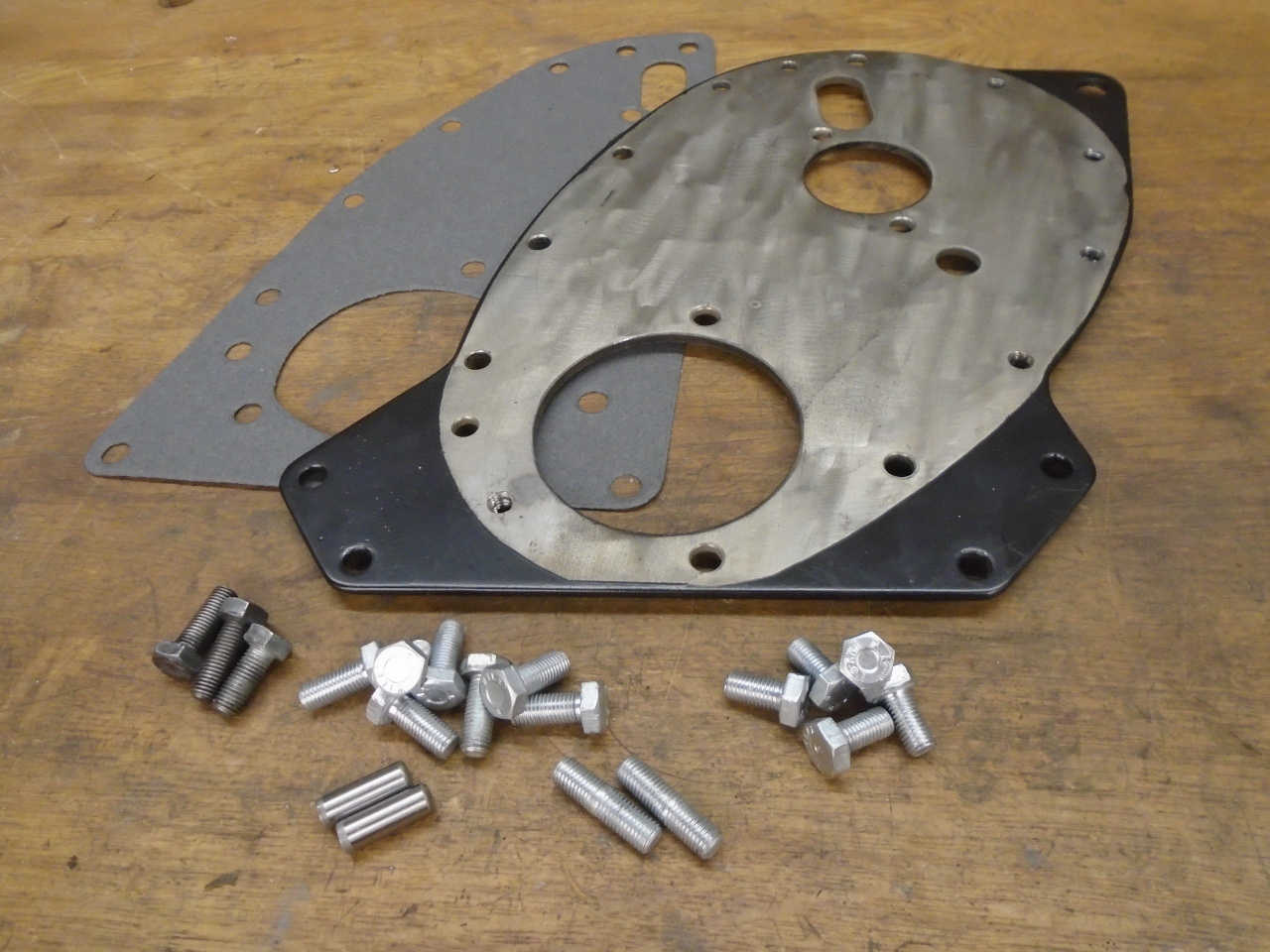
Shoved in new locating dowels. The originals didn't suffer
the removal process well.
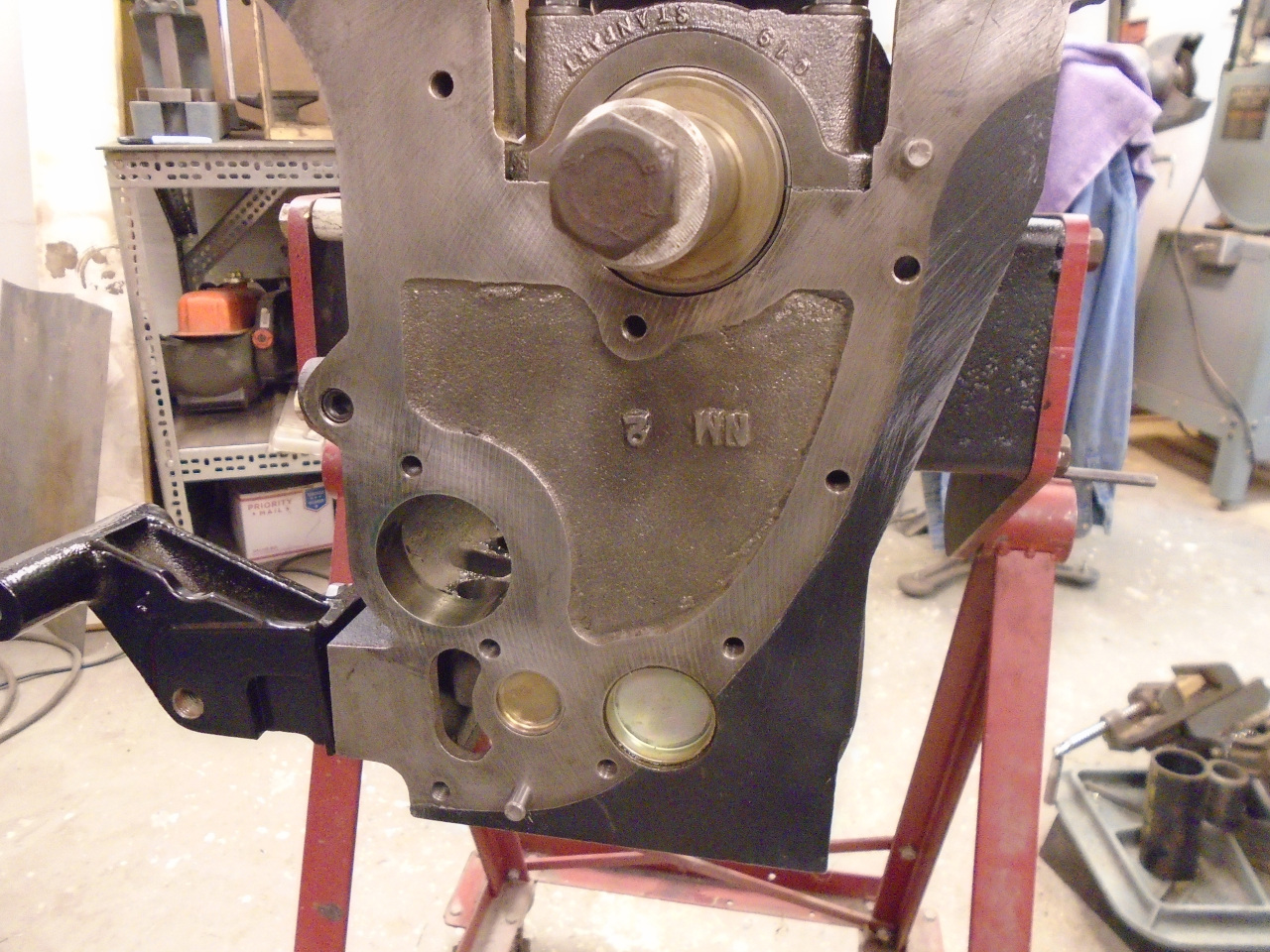
Applied the gasket with a good sealer, and added the plate.
The fasteners that go into the block are all tightened enough to
keep the joint compressed.
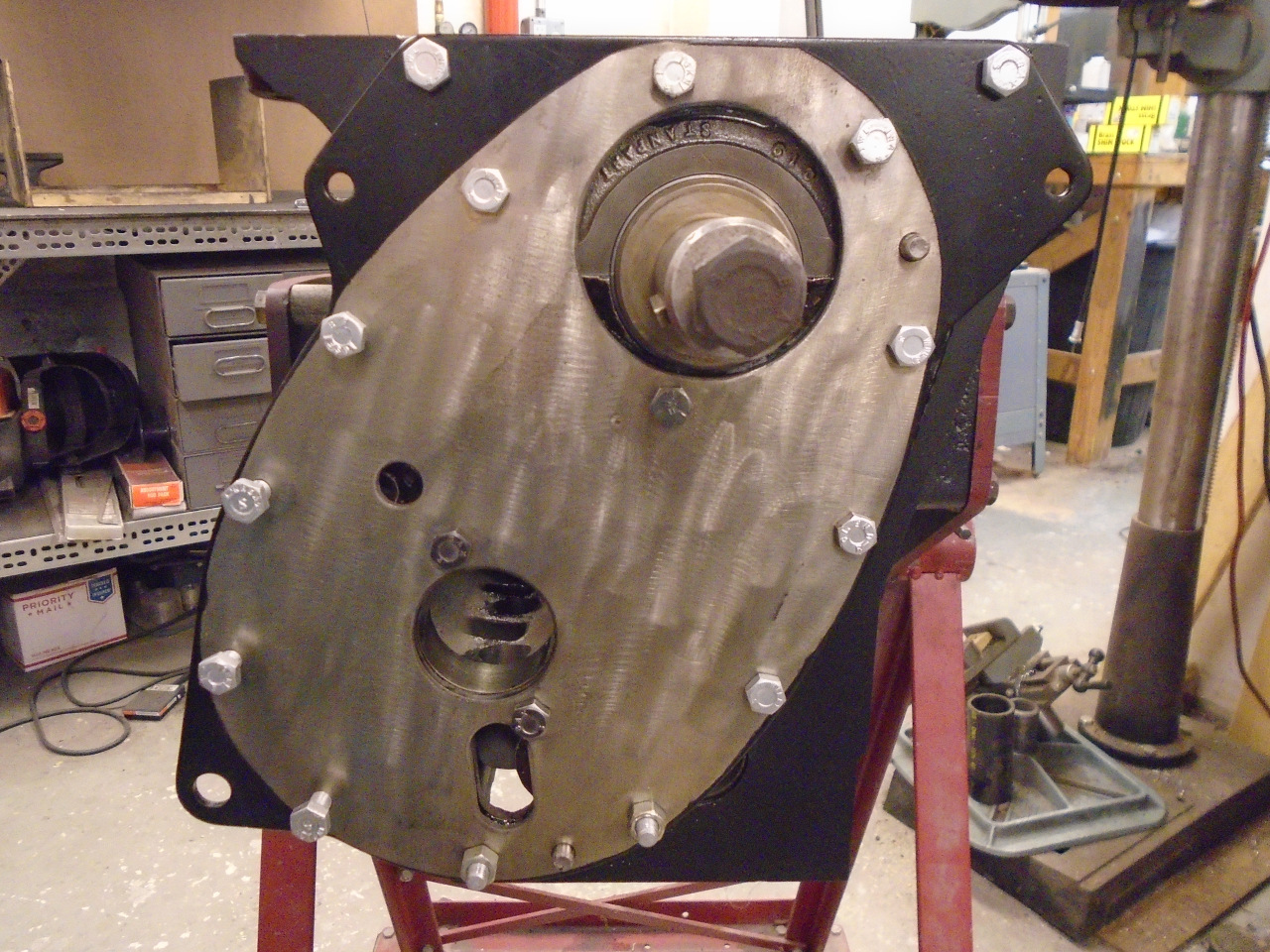
At this point, I was ready for the camshaft. There was
nothing apparent wrong with my original cam, but I was looking for
something a little more interesting. I put a GP2 cam in my
TR6, and like it a lot. To get some variety, this is a BP270
cam from BPNW.
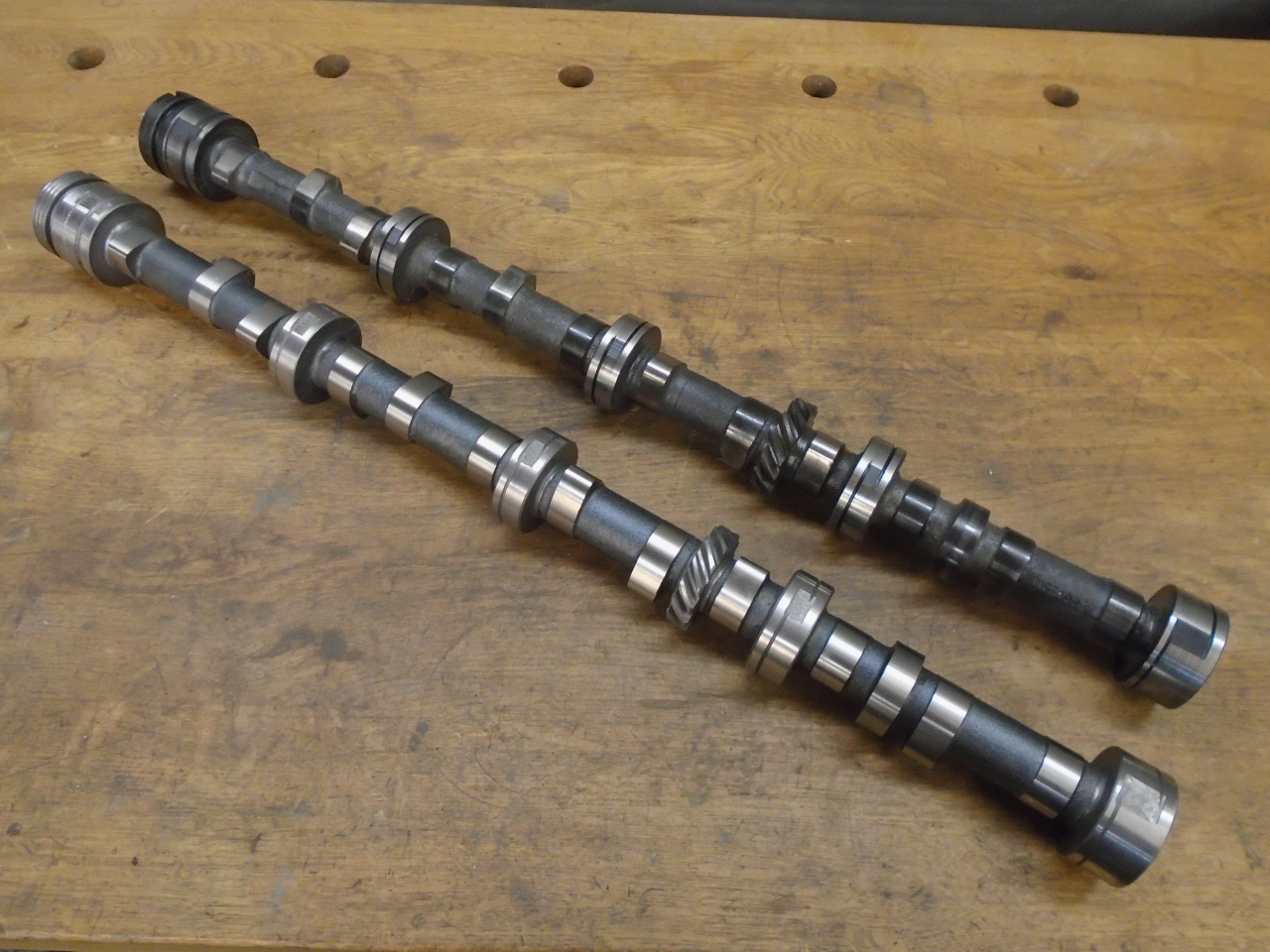
The cam went home without incident. With the keeper plate
torqued down, the cam turns smoothly.

At the rear of the engine, the cam bearing is exposed. This
opening gets closed off with a plug.
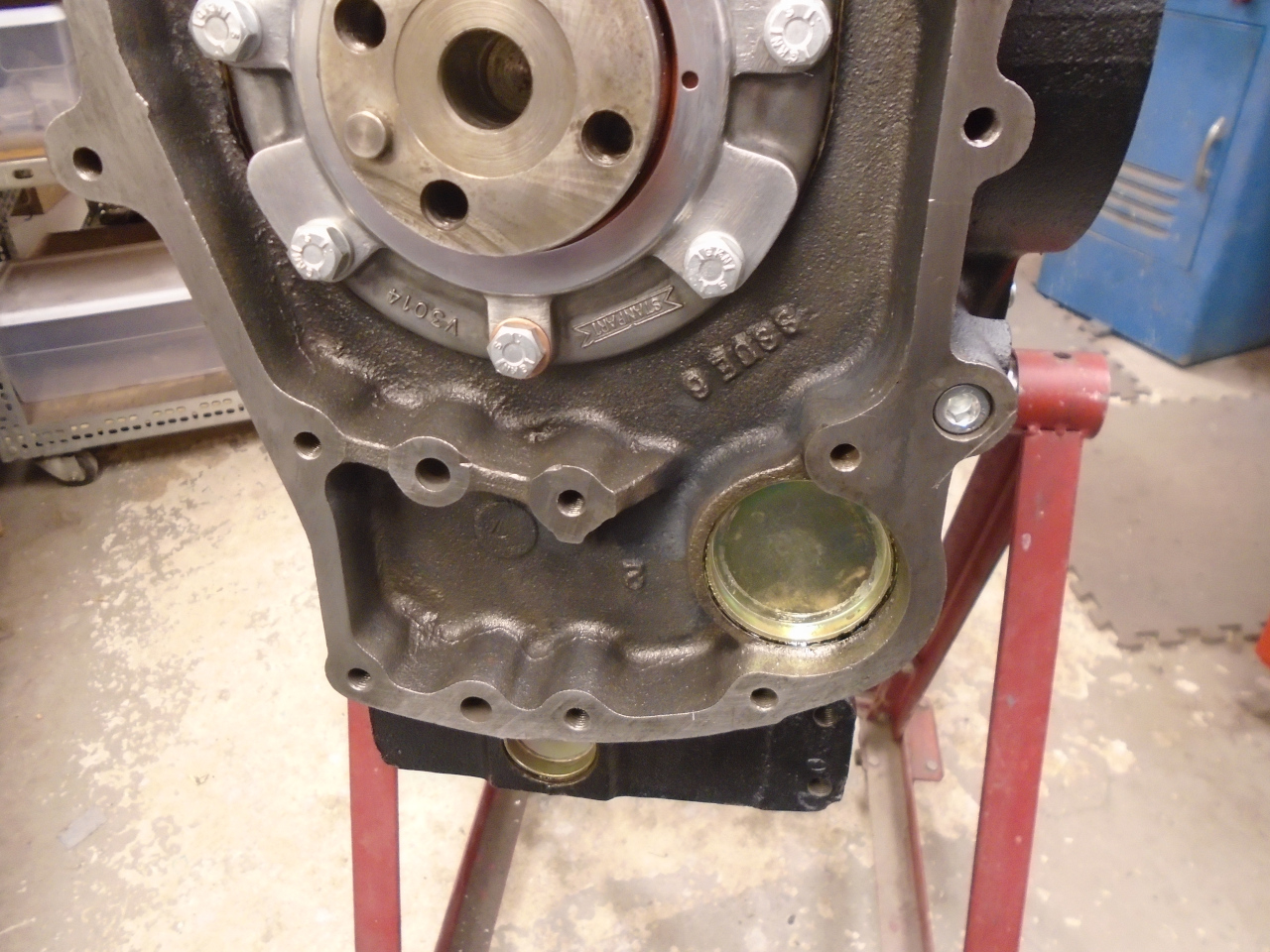
This engine seems to be moving pretty quickly now. Should
have it buttoned up soon.
Comments to Ed at elhollin1@yahoo.com
To my other GT6
pages.